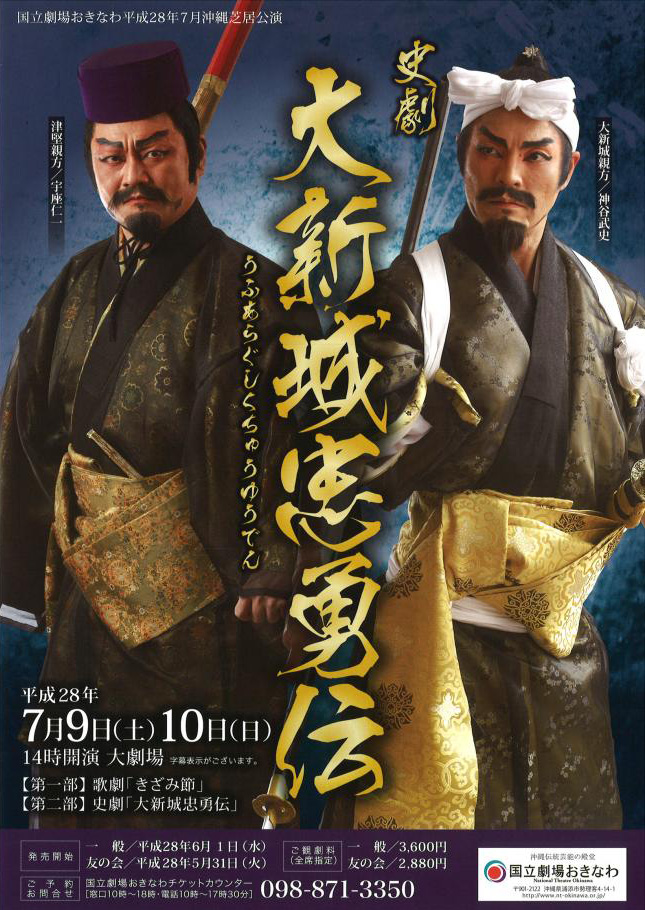In the previous article, I wrote about Tsuken no Kon. This kata is said to be one of the oldest bōjutsu of Okinawa, dating back to a certain Tsuken Uēkata Seisoku.
According to historian Majikina Ankō (1923), Tsuken Uēkata Seisoku handed down a staff fencing method called Tsuken-bō, which had a striking resemblance with the sword style of Jigen-ryū. According to this, Tsuken-bō must have existed in the 1920s, including a historical story to it. Majikina explains that the Okinawan bō was either six or three feet in length, with the first representing the method of the lance, and the latter representing the method of swordmanship. Finally, he says that this spear and staff method of the early 1600s are considered the origin of bōjutsu in Okinawa.
Tsuken Uēkata Seisoku was a historical person. The following information came to light.
Year of birth and death unknown. His Chinese-style name was Zen Kōsei. Due to his excellent qualities as a horseman, he won the favor of military commander Shimazu Yoshihiro of the Satsuma Domain, and by this he instantly gained power and influence. According to the Ryūkyū-kuni Yuraiki (1713), he seems to have acquired the skill of horseback riding during his stay in Satsuma.
In 1615 he proposed the creation of a trading port for Japanese ships in Taba Gushikawa district (in today’s Uruma city at Kin Bay). Together with Goeku Chōshu he was appointed magistrate to pursue this matter. Uezo Seiso, as the temporary chief administrator (sōjitō) of Gushikawa district was also involved in the planning of the construction work. His father was minister Yuntanza Seishō. At the time of the Shimazu hostile takeover, Yuntanza was Minister of Commerce (Osasu no Soba-kan) and participated in the peace negotiations (See Kyūyō Fukan, article 3). Yuntanza also once repulsed an application submitted by Tsuken Seisoku to be employed as the territorial administrator of Tsuken Island. Harboring a grudge over this rejection, Tsuken defamed Uezo’s working methods until the latter had to resign from office. Tsuken also defamed Uezo’s father, minister Yuntanza, until the latter also lost his office. As a result of these events, Uezu was sentenced to banishment to a remote island, and Yuntanza was demoted to the status of a commoner.
In 1617, Lord Shimazu Iehisa ordered a re-examination of the case and dispatched an inspector with two clerks. As a result of the investigation, Tsuken was identified as the real offender. Uezu’s banishment was repealed and Yuntanza returned to his original position as minister (sanshikan). Tsuken Seisoku lost his position of power. His hereditary fief of Tsuken was confiscated and he was interned in Kagoshima. The construction works of the planned trading port came to a halt and were never finished.
Btw, on Tsuken Island itself, Tsuken Uēkata Seisoku was referred to as Chikin Uēkata or Chikin Pēkū. Of course, Chikin is the dialect pronunciation of Tsuken, and Uēkata is a high rank within the royal government. As regards Chikin Pēkū, it might be a short form of Pēkumi, which is the way of pronouncing the title Pēchin only when the bearer is a fief holder. That is, both designations refer to him as either the general estate-steward (Uēkata) or the assistant estate-steward (Pēkumi) of Tsuken Island.
In addition, in the Okinawan play “The Legend of Loyalty and Bravery of Ufu-Aragusuku,” Tsuken is depicted as a traitor who was involved in the succession to the throne after King Shō Sei’s death, but this story is pure fiction.
Bōjutsu on Tsuken Island
There is a sūmachi-bō on Tsuken Island, which refers to a group of bō bearers usually walking in spirals to the rythm of gongs and horns during festivals. On Tsuken Island, it includes flag bearers, music, dances, historical costumes of the kingdom era, and so forth. It is a lively community activity attended by all ages, from little children to old seniors. It seems that it was held in 2013, but dates are unclear. I remember my colleague Walt Young, who also researches the tradition Tsuken Bō, told me he tried in vain to get someone to film the festival.
Anyway, in the past a crowd of about 200 men is said to have gathered at the community space called Shikirunchimā and performed the sūmachi-bō in two formations. It also includes bō kata as well as two-person kumibō.
On Tsuken Island, the originator of the Tsuken-bō is said to be Tsuken Akan’chū (Red Person). As an eminent figure, he has even been featured in comic books, and although some of his stories of bravery are exaggerated, the story of Tsuken Akan’chū has been generally passed down from generation to generation on the island as follows.
He was 180 cm tall, strong and agile, and was a strong sumō wrestler. He learned bōjutsu from Tsuken Uēkata Seisoku but was so skilled that he surpassed his master. During a fishing trip, he was swept away by a strong wind to Korea, where he killed a tiger.
Like this, according to tradition, Tsuken Uēkata Seisoku taught bōjutsu to Tsuken Akan’chū, and the latter surpassed his teacher in skill. Of course, as everyone knows, there is the famous paddle kata called Tsuken Akan’chū no Uēku-dī.
Sources:
- Quast, Andreas: Karate 1.0 – Parameter of an Ancient Martial Art. 2013.
- Genealogy of Goeku Uēkata Chōshu, 5th generation of the Princly Shō-clan, House Wakugawa.
- Dana Masayuki, in Okinawa Daihyakka Jiten, Vol. 2. 1982
- Higa Shigezaburō: Records of Tsuken Island. 1990.
© 2023, Andreas Quast. All rights reserved.

